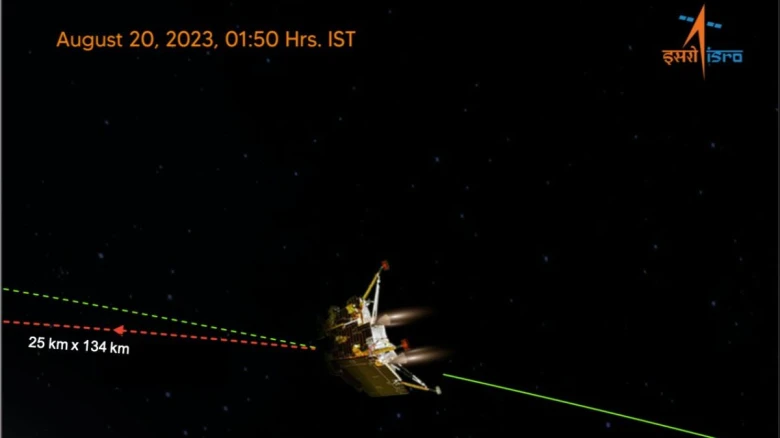Regional

The Chandrayaan-3 lander module, which is scheduled to attempt a soft landing on the Moon on August 23, has established two-way communication with the...
Digital Desk: The Chandrayaan-3 lander module, which is scheduled to attempt a soft landing on the Moon on August 23, has established two-way communication with the Chandrayaan-2 orbiter, the Indian Space Research Organisation (ISRO) announced on Monday. "Ch-2 orbiter formally welcomed Ch-3 LM. Two-way communication between the two is established," the space agency wrote on X.
The space agency also stated that its mission operations complex in Bengaluru now has more routes to reach the lander module, which includes lander Vikram and rover Pragyan.
ISRO announced on Sunday that Chandrayaan-3 will land on the moon at 6:04 p.m. on August 23. The live telecast of the landing event will begin at 5:20 p.m., according to the agency.
Earlier in the day, the space agency shared images of the lunar far side captured by the Lander Hazard Detection and Avoidance Camera (LHDAC). The space agency claimed that this camera, built by ISRO, helps in detecting a secure landing place free of boulders or deep pits during the descent.
ISRO is just days away from making history if it manages to soft-land Chandyrayaan-3 on the moon's south pole, an unexplored territory on the lunar surface.
Russia's first journey to the South Pole in 47 years failed after its mission spacecraft, Luna-25, lost contact during a pre-landing maneuver and crashed into the Moon.
Chandrayaan-3's lander will spend 14 Earth days on the Moon after landing on the surface. During this time, the lander payloads on board will measure the density of near-surface plasma (ions and electrons) and how it changes over time, as well as measure the thermal properties of the lunar surface near the polar region and delineate the structure of the lunar crust and mantle.
To gain a better understanding of the lunar surface, the rover payloads will conduct qualitative and quantitative elemental analysis, determine the chemical composition, and infer mineralogical composition. The payload will also identify the elemental composition (Mg, Al, Si, K, Ca, Ti, Fe) of the lunar soil and rocks around the lunar landing site.
Leave A Comment